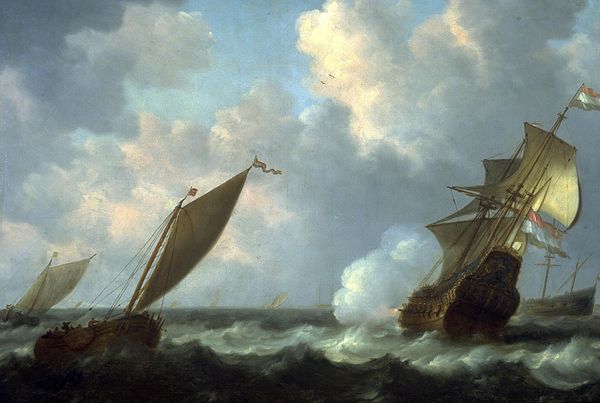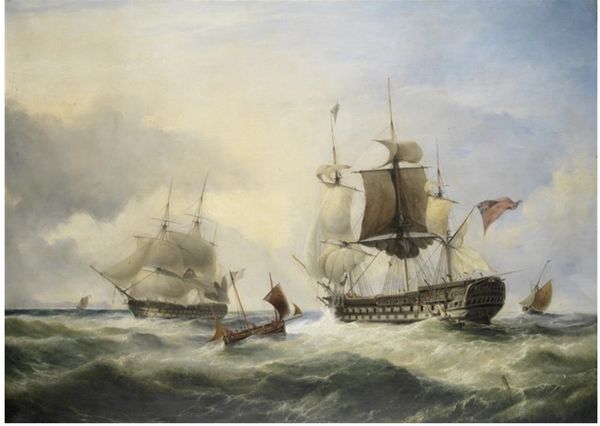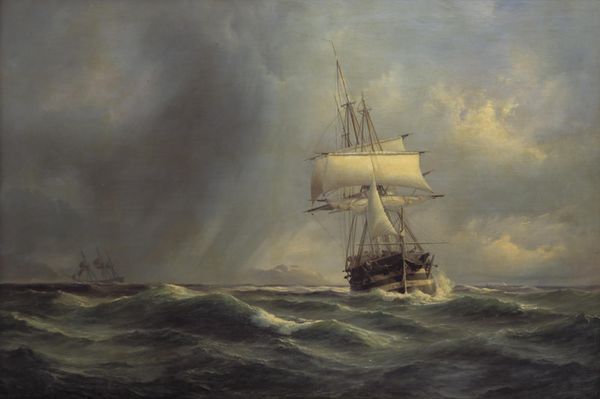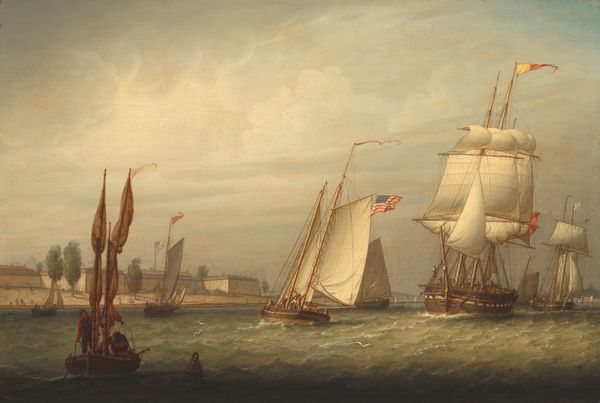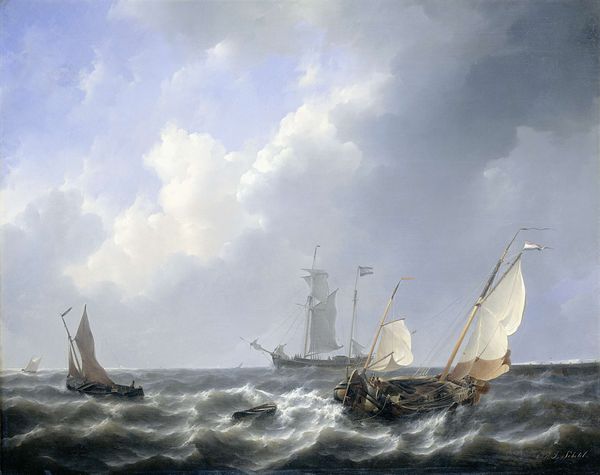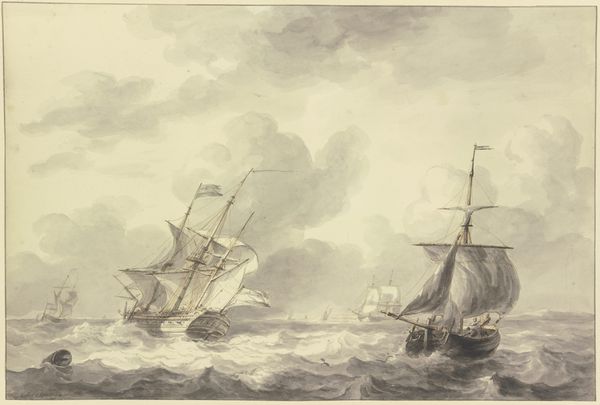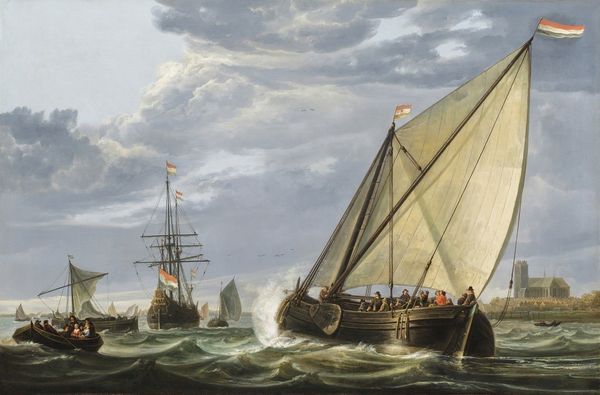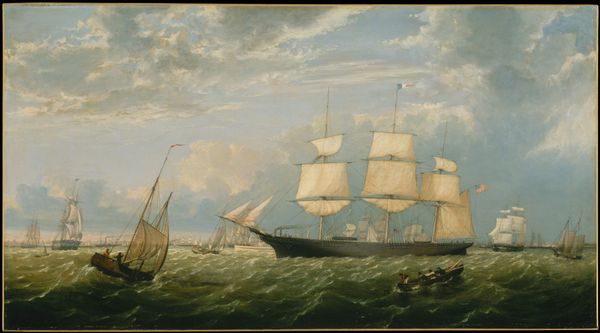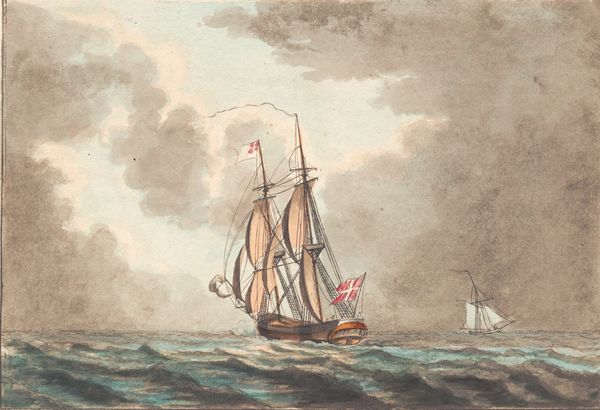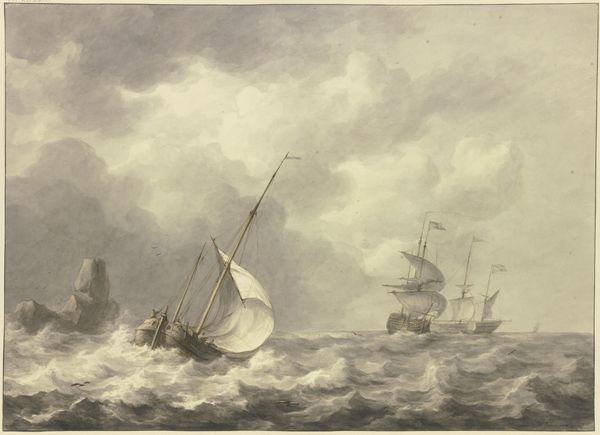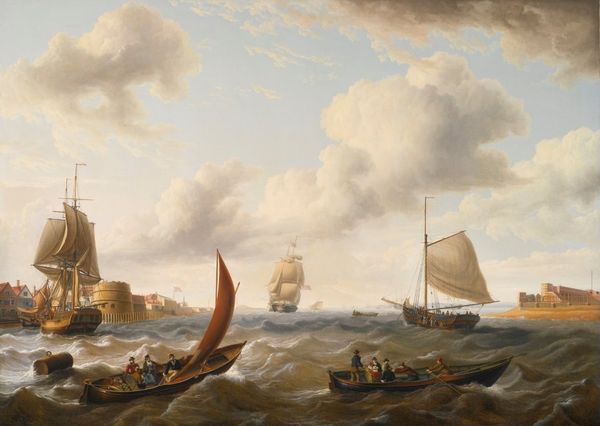
painting, oil-paint
#
painting
#
oil-paint
#
landscape
#
romanticism
#
history-painting
#
realism
Dimensions: 45.1 × 65.1 cm (17 3/4 × 25 5/8 in.)
Copyright: Public Domain
Editor: This oil painting, “Capture of the Tripoli by the Enterprise,” was made between 1806 and 1812 by Thomas Birch. The stormy sky and dark waves make the naval battle seem quite dramatic. I wonder, what sort of impact did paintings like these have at the time? Curator: That's a great question! History paintings such as this, depicting scenes of national triumph, played a crucial role in shaping and reinforcing a young nation's identity. Think about how the media was structured then: paintings were far more important as documents. It shows us a romanticized yet seemingly factual image of bravery in action, fueling patriotic sentiment and bolstering support for national endeavors, like, say, military expansion. Does the composition strike you as particularly staged? Editor: Yes, it does! The placement of the ships and the dramatic lighting make it feel more like a theatrical performance than a realistic portrayal of battle. So, it’s not just documenting history but shaping its narrative. Curator: Precisely. These images reinforced the idea of American heroism and justified the exercise of power on the global stage. Moreover, it shaped public perception by controlling how citizens viewed historical events, the role of the Navy, and the cost of maritime battles, influencing civic pride and national unity. Were these depictions universally accepted? Editor: I imagine that opinions would be somewhat mixed. Someone who would've experienced that war directly might take issue with the polished interpretation, as opposed to someone who hadn't. Curator: That’s right! Social class and geographical location influenced reception. Some might've been more skeptical of these glorifying portrayals of warfare. It is key to examine these portrayals within their social, cultural, and institutional frameworks, right? Editor: Definitely, seeing it in terms of how it was viewed, not just what it depicts, makes a big difference. Thanks! Curator: You're welcome! It has been my pleasure to shed light on how such paintings functioned beyond their aesthetic appeal, reflecting broader socio-political forces at play.
Comments
No comments
Be the first to comment and join the conversation on the ultimate creative platform.

